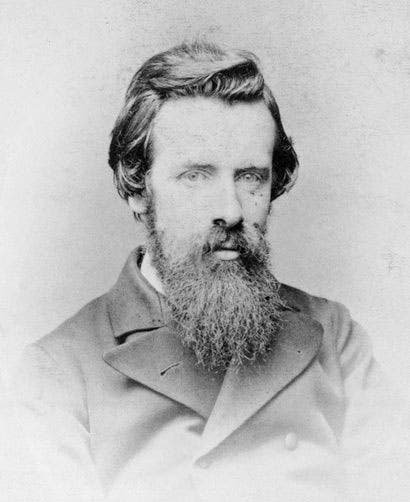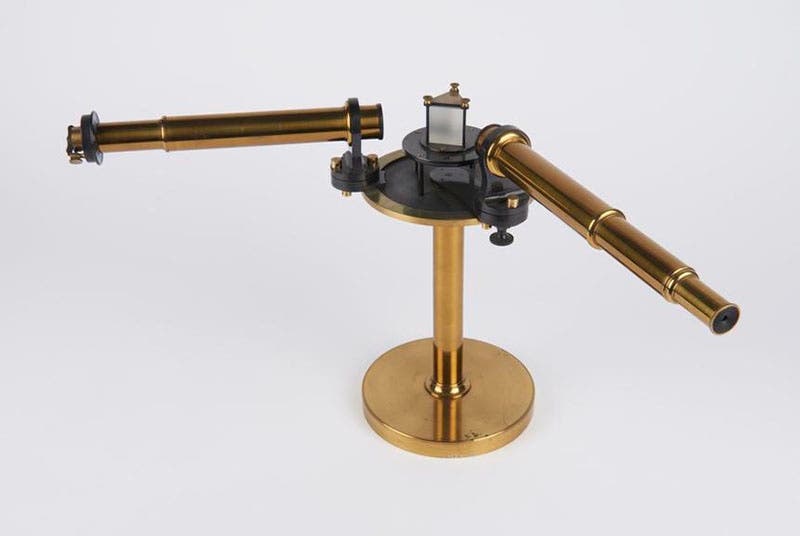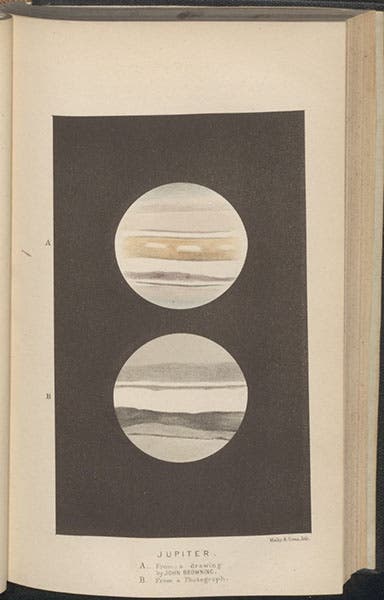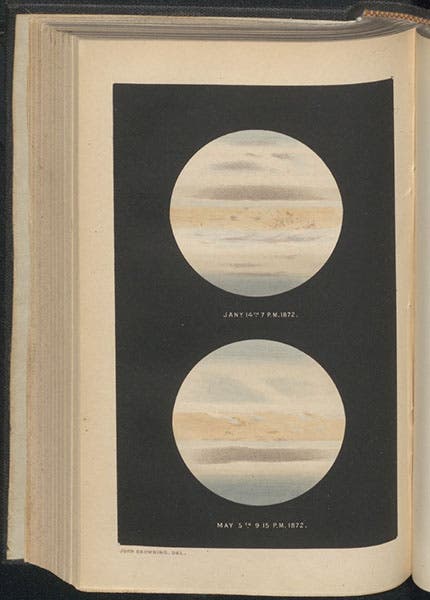Scientist of the Day - John Browning
John Browning, an English optical instrument maker, died Dec. 14, 1925, at the age of about 90. Browning began making telescopes and microscopes in the 1850s, and continued to do so until he sold the Browning firm and name to a larger company in 1900. He specialized in spectroscopes, and even wrote a book, How to Work with the Spectroscope (1878) that, regrettably, we do not have in our collections. His spectroscopes were reportedly used by many of the major spectroscopists, including Norman Lockyer and William Huggins. There is a wood engraving of a Browning laboratory spectrographic set-up in his book, which we borrow from Wikimedia. Many of the instruments sold by the Browning firm survive and appear regularly on the antique instrument market. We show a single-prism student spectroscope from 1875 that has ended up in the Science Museum, London.
No discussion of Browning that I read mentions the fact that he was a competent astronomical observer himself, and an excellent draughtsman. Many years ago, when I was browsing though some issues of the Monthly Notices of the Royal Astronomical Society (RAS), working on an exhibition on planetary imagery, I ran across two lithographs in two separate articles that depicted views of Jupiter drawn by Browning. The first was especially interesting, because it compared a drawing made through the telescope on Oct. 24, 1870, with a photograph, taken by Warren De la Rue at almost the exact same time that Browning was making his drawing (fifth image, below). There was considerable debate in those years as to whether the human eye was more or less sensitive than the photographic plate, with visual observers maintaining they could see details in the Moon or the planets that the photograph did not capture. Comparative tests between photographs and drawings were seldom made deliberately, so the coincidence that Browning reported on is especially intriguing. Browning demonstrated that he was able to see the main equatorial belt as faintly orange in color, with several white spots, none of which showed up on De la Rue’s photograph. We should note, however, that what Browning reproduced on his plate, as the bottom image, is not the actual De la Rue negative, but rather a drawing that Browning made of the negative, viewed under a microscope.
The next year, Browning presented four additional drawings of Jupiter to the RAS, and two of them were reproduced in the Monthly Notices for 1872. They do not reveal anything special about Jupiter, but I wanted to include them here, because they are the most beautiful, softly-colored, hand-drawn prints of Jupiter that I have ever seen. We show a detail of the top drawing for our opening image, and the entire plate as our last one, just below.
There is a silver-on-glass Browning reflector at the National Museum of American History at the Smithsonian; if anyone know of other Browning instruments on public display, or of other Browning astronomical artwork, I would love to hear from you.
Dr. William B. Ashworth, Jr., Consultant for the History of Science, Linda Hall Library and Associate Professor emeritus, Department of History, University of Missouri-Kansas City. Comments or corrections are welcome; please direct to ashworthw@umkc.edu.











